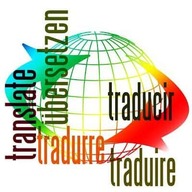Parque Güell stands as one of Barcelona’s most famous landmarks, blending nature, art, and architecture. Designed by the renowned architect Antoni Gaudí, this park reflects his unique modernist style and attracts millions of visitors annually. Situated on Carmel Hill, Parque Güell is a vibrant testament to Catalan creativity and cultural heritage.
Parque Güell: Information on Parque Güell?
Parque Güell was originally conceived in the early 20th century as a luxury residential estate commissioned by wealthy industrialist Eusebi Güell and designed by Antoni Gaudí. Construction began in 1900 with plans to build a garden city for Barcelona’s elite, but the project was never completed as a housing development. Instead, the area was opened as a public park in 1926. The park showcases Gaudí’s naturalist phase, where he incorporated organic shapes and forms inspired by nature. Key features include curving benches, colorful mosaics, unique architectural structures, and lush gardens. In 1984, UNESCO designated Parque Güell a World Heritage Site, recognizing its outstanding cultural and architectural significance as part of the "Works of Antoni Gaudí" collection.
Legacy
Parque Güell is not only a remarkable artistic and architectural achievement but also an emblem of Catalan identity and creativity. Gaudí’s innovative use of natural forms and inventive structural techniques marked a pivotal moment in modernist architecture. The park transitioned from a failed residential project to a beloved public space treasured by locals and tourists alike. Its preservation is supported by organizations passionate about Gaudí’s work, and the Gaudí House Museum within the park, opened in 1963, offers insight into his life and creative process. Furthermore, the park’s continued status as a UNESCO World Heritage Site ensures its protection and recognition as a symbol of cultural heritage that transcends time.
Parque Güell : What people say about it?
Visitors often describe Parque Güell as a magical and enchanting place, praising its fairy-tale aesthetics and vibrant mosaics. Many appreciate the way Gaudí’s creativity transforms the park into a living work of art that feels like a journey into nature and imagination. While locals sometimes express concerns about overtourism, most people agree that the park’s beauty and cultural importance warrant sharing with the world. Reviews highlight the park’s unique architectural elements, such as the dragon-shaped salamander at the entrance and the undulating benches, which blend artistic innovation with functional design, making Parque Güell a favored spot for photography, relaxation, and cultural discovery.
Where to find out more?
To learn more about Parque Güell, the official park website offers detailed information on its history, events, and visitor guidelines. The Gaudí House Museum within the park provides a closer look at the architect’s personal life and work. Numerous guided tours in Barcelona cover the park extensively, emphasizing its artistic, historical, and cultural context. Additionally, UNESCO’s website provides insights into why Parque Güell is recognized as a World Heritage Site. For a deeper understanding, books and documentaries on Antoni Gaudí and Catalan modernism also explore the significance of Parque Güell within his broader architectural legacy.
Parque Güell Summary
Discover the magic of Parque Güell, Antoni Gaudí’s visionary masterpiece in Barcelona where art meets nature. Explore Gaudí’s unique architecture and vibrant mosaics in a UNESCO World Heritage Site loved by millions worldwide. #ParqueGuell #Gaudi #Barcelona



